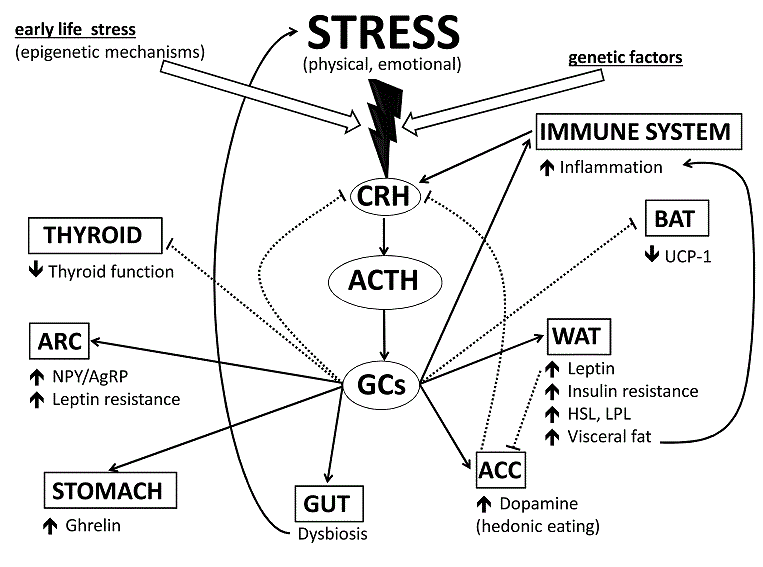
 |
| Figure 1: Main effects of chronically elevated GC levels on some mechanisms underlying weight gain. Either physical or emotional stressors trigger the stress response and activate the HPA axis, which responsiveness is determined by genetic and epigenetic factors (such as early life trauma or abuse). Hypothalamic CRH suppresses appetite and stimulates pituitary ACTH, which in turn induces the secretion of GCs from the adrenal cortex. GCs exert a negative feedback control and relief the anorexigenic effect. GCs stimulate appetite by acting directly at the ARC, where the secretion of orexigenic signals and leptin resistance are induced; release of ghrelin by the stomach is increased as well. GCs inhibit thyroid function through different mechanisms (see text), and decrease the activity of UCP-1 in BAT, thus slowing metabolism. Intestinal dysbiosis caused by GCs is linked to obesogenic metabolism and in turn affects the stress response. GCs and comfort food induce hedonic overeating by stimulating the dopaminergic circuitry: elevated dopamine levels contribute to damp down the stress response. However, GCs also act on WAT by increasing leptin production, which in turn decreases the hedonic mechanism of regulation of food intake. GCs also cause insulin resistance and lipid dysmetabolism leading to accumulation of visceral fat. Visceral fat derived cytokines contribute to increased inflammation which is associated to GC resistance due to chronically elevated levels of GCs. Inflammation in turn stimulates the stress response in a vicious circle (See text for abbreviations, Solid arrows: stimulatory effects; dotted arrows: inhibitory effects.). |